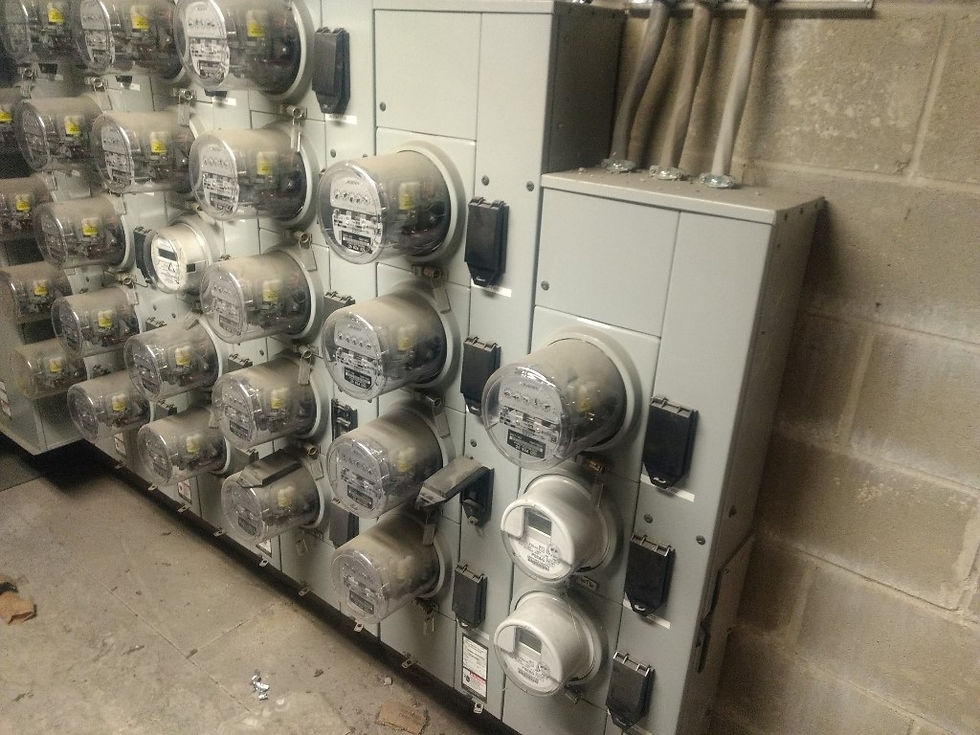Type I and Type II Commercial Vent Hood Code Requirements- NYC New York
- Built Engineers

- Dec 4, 2023
- 3 min read

All commercial kitchens must adhere to a variety of rules, regulations, and codes to operate legally. Proper ventilation is not just a matter of comfort; it is a legal and safety requirement to maintain air quality, prevent fire hazards, and comply with health codes.
According to iccsafe.org, it lists the following as general guidelines for vent hood installation and design:
507.1General.
Commercial kitchen exhaust hoods shall comply with the requirements of this section. Hoods shall be Type I or II and shall be designed to capture and confine cooking vapors and residues. A Type I or Type II hood shall be installed at or above appliances in accordance with Sections 507.2 and 507.3. Where any cooking appliance under a single hood requires a Type I hood, a Type I hood shall be installed. Where a Type II hood is required, a Type I or Type II hood shall be installed. Where a Type I hood is installed, the installation of the entire system, including the hood, ducts, exhaust equipment and makeup air system shall comply with the requirements of Sections 506, 507, 508 and 509.
Exceptions:
1.
Factory-built commercial exhaust hoods that are listed and labeled in accordance with UL 710, and installed in accordance with Section 304.1, shall not be required to comply with Sections 507.1.5, 507.2.3, 507.2.5, 507.2.8, 507.3.1, 507.3.3, 507.4 and 507.5.
2.
Factory-built commercial cooking recirculating systems that are listed and labeled in accordance with UL 710B, and installed in accordance with Section 304.1, shall not be required to comply with Sections 507.1.5, 507.2.3, 507.2.5, 507.2.8, 507.3.1, 507.3.3, 507.4 and 507.5. Spaces in which such systems are located shall be considered to be kitchens and shall be ventilated in accordance with Table 403.3.1.1. For the purpose of determining the floor area required to be ventilated, each individual appliance shall be considered as occupying not less than 100 square feet (9.3 m2).
3.
Where cooking appliances are equipped with integral down-draft exhaust systems and such appliances and exhaust systems are listed and labeled for the application in accordance with NFPA 96, a hood shall not be required at or above them.
Understanding the Purpose of Vent Hoods:
Commercial kitchen vent hoods, also known as exhaust hoods or range hoods, are designed to remove heat, smoke, grease, and other airborne particles generated during cooking. They play a vital role in maintaining a safe and comfortable environment, preventing the buildup of pollutants, and ensuring compliance with regulations.
Types of Vent Hood Systems:
Vent hood systems come in various types, including Type I and Type II hoods. Type I hoods are designed for removing grease and smoke, typically found above cooking appliances such as grills and fryers. Type II hoods, on the other hand, are used for capturing heat and steam produced by non-grease-producing appliances like ovens and dishwashers.
Sizing and Placement:
Proper sizing and correct placement of vent hoods are critical for their effectiveness. The size of the hood should match the equipment it serves, ensuring that all contaminants are captured. Additionally, hoods should be installed at the proper distance above cooking surfaces to effectively capture and exhaust pollutants.
Exhaust Fan Requirements:
Vent hoods are equipped with exhaust fans that play a pivotal role in creating the necessary airflow. The fan's capacity must be sufficient to handle the volume of air produced by the cooking equipment it serves. Regular maintenance is essential to ensure fans operate at peak efficiency.
Fire Suppression Systems:
Many jurisdictions require the installation of fire suppression systems in commercial kitchen vent hoods to enhance safety. These systems automatically discharge fire suppressants, such as wet chemicals, to quickly extinguish grease fires and prevent them from spreading.
Compliance with Codes and Standards:
Compliance with local building codes and national standards, such as those set by the National Fire Protection Association (NFPA) and the International Mechanical Code (IMC), is crucial. These codes dictate the minimum requirements for ventilation systems to ensure the safety of the kitchen staff and the establishment.
Regular Maintenance and Cleaning:
Ongoing maintenance and cleaning are essential to keep vent hoods functioning optimally. Accumulated grease and debris not only reduce the system's efficiency but also pose a significant fire hazard. Regular inspections and cleaning schedules should be established and adhered to.
Professional Installation:
Vent hood systems should be installed by qualified professionals who understand the specific requirements of commercial kitchens. Professional installation ensures that the system meets all safety and compliance standards, reducing the risk of issues arising in the future.
Contact our professionals at Built Engineers today!






Comments